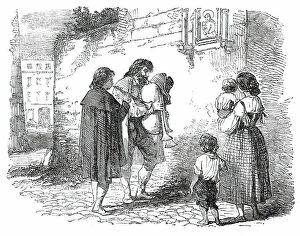Calabrian Collection
"Discover the Flavors and Rich Heritage Cuisine in Italy's Vibrant Region" Calabria, located in Southern Italy
All Professionally Made to Order for Quick Shipping
"Discover the Flavors and Rich Heritage Cuisine in Italy's Vibrant Region" Calabria, located in Southern Italy, is renowned for its culinary delights and cultural treasures. One of the region's most famous delicacies is the hot calabrian soft salami known as Nduia. This spicy sausage, made with pork fat and chili peppers, adds a fiery kick to any dish. But Calabria offers more than just gastronomic pleasures. It boasts breathtaking landscapes that range from stunning coastlines to rugged mountains. Seminara, a picturesque town in Calabria, is home to the Sanctuary Madonna dei Poveri. This sacred place attracts pilgrims from all over Europe who seek solace and spiritual enlightenment. The historical significance of Calabria can be seen through its ancient artifacts. The Fish Plate dating back to 340-320 BCE showcases intricate designs created by the Perrone-Phrixos Group. Coins also play a significant role in uncovering the past; a drachm depicting Nike, the goddess of victory, transports us back to 216-203 BCE. Another coin portrays Amphitrite, a nymph associated with water bodies and wife of Poseidon - an intriguing glimpse into mythology during this era. Speaking of Poseidon, his image adorns a Hemidrachm coin from the 3rd century BCE. Staters were another form of currency used during ancient times; they bear various depictions such as horsemen galloping across fields or mythical creatures like Caulos and Deer. These coins provide valuable insights into both artistic expression and societal values prevalent between 500-480 BCE. Among these fascinating coins lies one featuring Terrina - an enigmatic nymph whose story remains shrouded in mystery but captivates our imagination nonetheless. Lastly, we encounter yet another Horseman on a Stater coin dated around 334-302 BCE – evidence that equestrian culture held great significance in Calabria's ancient society.






























